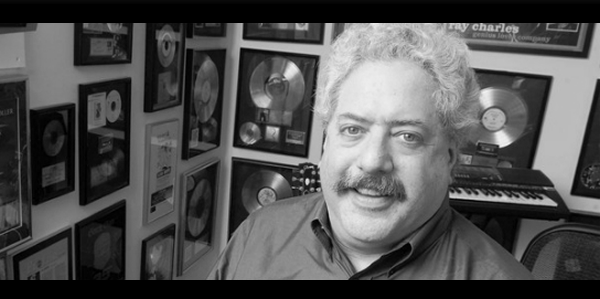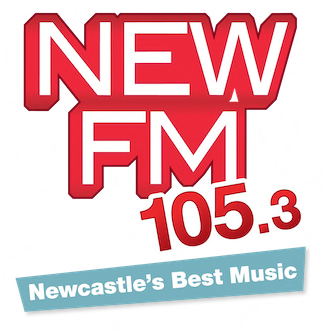Lee Abrams – Rock Radio SuperStar

Lee Abrams is one of the most influential thinkers in modern media.
Lee didn’t invent Rock Radio but he might as well have.
Dave Charles who worked alongside him has this observation on what Lee Abrams brought to the world of Rock Radio.
‘Lee redefined Album Oriented Rock (AOR).
Lee Abrams took the progressive “underground” alternative album rock format created by Big Daddy Tom Donahue at KSAN FM in San Francisco in the 70’s and determined that those fans of this music hadfavouritesongs and artists. All Lee did was create a tighter top 40 type format for this music which he defined as ‘SuperStars Album Rock’. As Lee Abrams says, “It was based on the idea of changing the familiarity factor of the music to artist, instead of song. The basic rule of Top 40 radio has always been, ‘you know every song.’ We decided to change it to where you know every artist. Therefore, you could play hundreds of songs by these artists, as long as you knew who the artist was. So you’d hear the Moody Blues but not ‘Tuesday Afternoon’ again. You could have this tremendous depth without sacrificing familiarity. We launched this AOR format and it was very successful because it reached this huge number of people. Throughout the 70’s we could waltz into any market in America and clean up because we were in-between the Donnie Osmond station and the underground station”.
It took North America by storm.
He created exceptional ‘event type promotions’ like Disco Destruction which polarized those who loved Album Rock music. The SuperStars Album Rock movement single handedly destroyed disco. Why? Because disco had no real superstars. Mostly one hit wonders. It was disposable and fickle. Lee exploited that with Album Rock stars like Led Zeppelin, The Who, Yes, Supertramp, Doobie Brothers, Pink Floyd & Genesis.
Lee also managed to evolve AOR into the new alternative music of the 80’s that was created for the next generation. I.e. Eurythmics, Bryan Ferry, Roxy Music, Flock of Seagulls, A-ha and many others. This added another layer of alternative music to the music spectrum. Lee lead the way with these new sounds, which fitted perfectly into hisSuperStarsalbum format’.
Greg Smith: As a teenager you soon realised that Top 40 radio stations were annoying young male listeners by playing songs by artists like The Carpenters next to The Rolling Stones. Tell us about those days?
Lee Abrams : I called them vulnerable Top 40 listeners…They listened to the big AM Top Forty station and cranked up the Stones and Santana and flipped off the lighter stuff. It all began in ‘65 when we discovered that there was a new environment, emerging out of the British Invasion, where mainly guys between about 15 and 19 started rejecting a lot of mainstream music and gravitated toward the Byrds, Yardbirds, Animals etc… This rarely happened before as a hit generally reached just about everyone young, but now there was a rejection of a wide range of songs and a passion for the new more adventurous sound. This movement grew and by ‘67 artists like Hendrix and Cream were getting underground attention… Then, by ’69, all hell broke loose and we had a musical revolution at hand, but all you had were Top 40 stations playing the occasional taste of the revolution rather than embracing it, or a handful of FM progressive stations that were too self-indulgent to connect with the new mainstream.
GS: When did you realise that radio was going to be a major part of your life?
LA: December 10, 1962. My parents gave me a radio they got for Christmas, heard Dick Biondi on WLS and that was it. Magic transporting theatre of the mind. I was hooked, set the alarm for 2am to hear the all night guy…. hard to explain the magnetic attraction, but it was powerful.
GS: is it true that you became a Program Director at 16 years of age?
LA: Actually 18.
GS: What do you remember about your first day as a programmer?
LA: A bit intimidating as it was ABC O and O, in a top 5 market -Detroit, and the average jock was in his 30s. But, I had been planning on this for years, so you learn and adapt fast and let knowledge and insight guide you
GS: What important lessons did you learn in those early days?
LA: Empathy, ego management, good industry BS radar and thinking big picture and long term.
GS: Step us through your career up until the launch of your very successful consulting business, Burkhart Abrams. What were some of your early wins?
LA: While at WRIF I signed WQDR in Raleigh to consult using a format I had created in high school which was SuperStars. The PM DJ at our sister station WXYZ turned me onto the GM of the station, who heard we went number one in teens in one book. WQDR went to number one in 90 days and it got a lot of press. ABC wasn’t too happy and said ‘them or us’. I said ‘them’, as the opportunity was once in a lifetime. I had no money and signed only one other station, WRNO in new Orleans – that, too, went to the top. Now I was getting inquiries and a bit of a buzz, but needed help on the business and funding side.
GS: Why did you pick Ken Burkhart as your business partner?
LA: He was a well-known programmer, who was having huge success with AM stations. I wrote him with a proposal and said—you got AM… I got FM… maybe we should talk. He responded ASAP. We set up at KSTP in Minneapolis and hammered out a deal in 45 minutes. The next week, I moved to Atlanta and we started Burkhart Abrams.
GS: At Burkhart Abrams you created the SuperStars format. What did the blueprint look like?
LA: As commercial as possible without losing progressive identity. This was done by changing the familiarity factor to Artist, rather than Song, so you could have tremendous depth without sacrificing familiarity. It was the ‘Oh Wow’ factor. You hear Santana, but think ‘Oh Wow. It isn’t Black Magic Woman again…it’s another great cut’. Then, we added the layer of image enhancement via specials—long form like Beatles A to Z, and short, like Twofer-type stuff. Back then, this stuff supercharged the station’s musical identify. We also added built-in elements to ensure jock discipline, style and flow.
GS: What were the key elements that attracted listeners to the SuperStars format?
LA: Passion, character and muscle. More specifically, minute by minute airtight musical prowess, accented by features and a celebration of selected new releases. Initially, it was very simple and hard to over-think.
GS: When you signed a new client & visited the market, what approach did you take to achieve success?
LA: First step was to invite the PD to Atlanta to spend 3 days…if they weren’t passionately on-board we were screwed. So we’d hang out for three days, bond, and I’d get deep into the format mechanics and philosophy. Then, we would fly back to the market, present to the entire staff…then the air staff…. group and one on one, and, over the week, we’d install the concept and when it was running smoothly, I’d head home. We also spent a lot of time educating sales staff and meeting with clients. then revisit the market every month and keep in close contact using the Gmail, phone & visit triad. We also had these massive SuperStars conferences once a year where all clients would get together–those were incredible.
GS: Did you make up your mind very quickly on what had to be done?
LA: We were hired to install a new concept so that was ‘mission one’. We avoided the clichés as in “our market is different. Led Zeppelin isn’t big here”, etc….
GS: How did you deal with management who interfered with your strategy & put obstacles in your way?
LA: That initial visit was critical. They wanted to make money so it wasn’t that hard and we offered a way to do that with this new FM thing. If interference was deep and destructive, I would go to the guy that hired me and explain, but that was rare. It was a different era then…we offered something very new and compelling. We occasionally went into “underground” stations that were dying, and, that was tougher, as we were often viewed as stifling the creativity. Some of those guys just didn’t want to get it.
GS: Take us through some client case studies & the strategy used to build ratings success. What are some of your best outcomes?
LA: After huge success in Raleigh and New Orleans, a big rep firm called and asked if I would meet with Taft broadcasting, their big client. They set up a meeting with COO Carl Wagner–We hit it off and he invited me to present at their annual mangers’ meetings. I went to Key Biscayne and felt like I was at a Republican fundraiser — I had the long hair and God knows what they thought. The next morning before my presentation, I won the Taft tennis tournament, which was a rite of passage and brought me cultural cred. I then pitched the whole chain and walked away with Pittsburgh, Kansas City, Buffalo and Columbus. Each station soared to number one 18- 34 in a book, and that was what really propelled the Burkhart Abrams FM stations
GS: At its peak, how many client stations did Burkhart Abrams have?
LA: Nearly 1000.
GS: Having so many must have sharpened your time management skills.
LA: Oh yeah…I made every mistake…watched every mistake and earned a doctorate in broadcast culture, industry BS detection and positive inspiring management.
GS: When everyone wanted a piece of you, how did you get it all done?
LA: We hired a great team—Lee Michaels, Jon Sinton, Dave Logan and others, not to mention John Parikhal and Dave Charles later on.
GS: What are some of the common mistakes or false assumptions that programmers make?
LA: Living in the radio and records world rather than the street…. over researching…. failing to study programming history—you can’t design the future unless you understand the past, gotta understand the tactics and strategies of the past battles and rejigger them for today. Kinda like Patton studying great battles and of course isolating yourself from the BS and nonsense that fuels the business.
GS: During your time as a consultant you went through numerous highs & lows. What did you learn from that experience?
LA: Other than the dangers of drugs and alcohol, it’s all about the street…understanding culture instinctively…not getting into some sad ego thing…never regressing or living in the past—-use the past as fuel to design the future.


